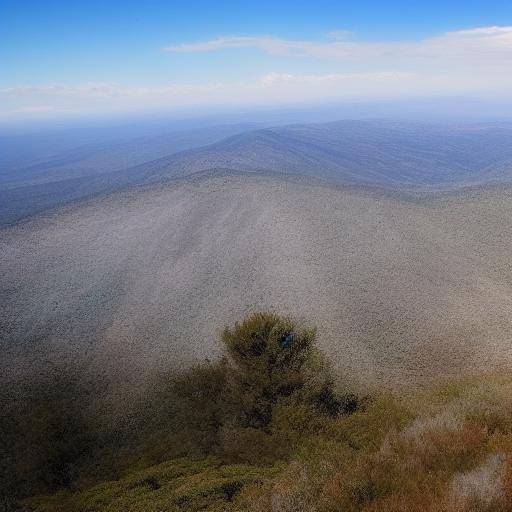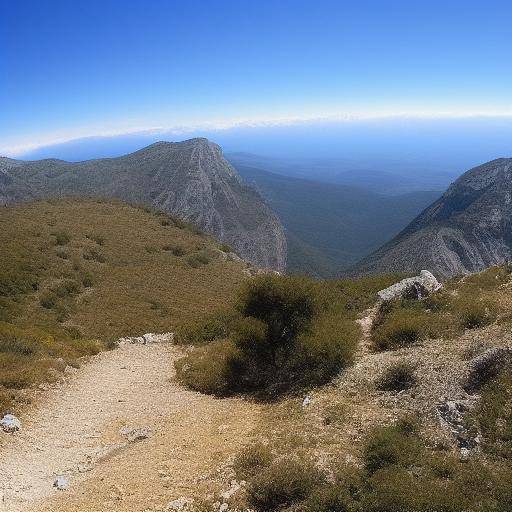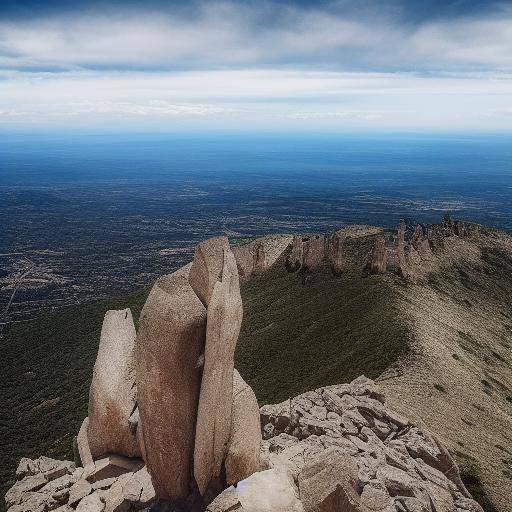
Mount Olimpo, located in Greece, has for centuries been a symbol of majesty and inspiration for artists from around the world. Its snowy peaks and ancestral forests have fed the creative spirit of painters, sculptors, poets and musicians, leaving a legacy that endures in the history of Greek art. In this article, we will explore the profound relationship between Mount Olimpo, Greece and Greek art, unraveling its historical connections, mutual influences and the impact on artistic expression. From mythology to contemporary reality, we will discover how this symbolic mountain has left an indelible mark on the art world.
Introduction
Mount Olympus, a site full of mythology, natural wonder and a rich cultural legacy, is much more than a mountain; it is home to the Olympic gods and a crucible of artistic inspiration. Over the centuries, it has nourished the creativity of the most brilliant minds, forging an indissoluble relationship between the art and the majesty of its landscapes. In this article, we will deepen the history, influence and impact of Mount Olympus on Greek art, exploring its symbolic meanings, its influence on mythology and its role as a source of inexhaustible creativity.
History and Background
Mount Olympus, with its 2917 meters of altitude, has been venerated since time immemorial. Its meaning transcends the merely physical, becoming a sacred space that has inspired generations of artists. From the mythological creations of Hesiodo and Homer to the later artistic representations of painters such as Rubens or sculptors like Phidias, Mount Olimpo has been a recurring theme that has transcended eras and artistic movements. Its influence extends beyond Greece, permeating Western art and perpetuating its legacy throughout the centuries.
Deep analysis
In Greek art, the representation of Mount Olympus not only embodies the natural beauty and majesty of the mountain, but also symbolizes the abode of the Greek gods, providing a mythological context that has nourished artistic creativity. The sculptural reliefs of the Parthenon, for example, represent scenes of life in the Olympus, with Greek deities as protagonists. These representations have fulfilled the important role of transmitting cultural and mythological values through art, serving as a mirror of Greek society.
Comprehensive review
The Greek Art on Mount Olympus is a testimony of the ability of artists to translate the divine into the earthly, capturing the essence of deity and humanity through the representation of Mount Olympus. This symbiosis between myth and nature has influenced all artistic disciplines, from sculpture to painting, permeating even the contemporary manifestations of Greek art. The transformation of Mount Olimpo into a source of timeless artistic inspiration reflects its cultural transcendence and its power to transcend geographical and temporal borders.
Comparative analysis
Both Mount Olympus and Greek art share an intrinsic quality: the transcendence of time. Through artistic representations, Mount Olimpo has remained in force in collective consciousness, perpetuating its influence on different forms of art and cultural manifestations. In addition, Greek art has managed to capture the immortal essence of Mount Olimpo, making it a legacy that continues to inspire generations of artists around the world.
Practical Tips and Accessible Recommendations
If you ever have the opportunity to visit Greece, we recommend you to explore Mount Olimpo and its surroundings, plunging into the vastness of its natural environment and absorbing the energy that has inspired artists throughout history. In addition, do not miss the museums and galleries dedicated to Greek art, where you can first-hand appreciate the representations of Mount Olimpo and its meaning in artistic expression.
Conclusions and FAQs (FAQs)
Conclusions
Art on Mount Olympus is a concrete testimony of the ability of the human being to transcend everyday reality and find inspiration in majesty and mythology. Over the centuries, Mount Olimpo has been a beacon of creativity that has guided artists in their search for expression. His presence in Greek art has left a lasting legacy that continues to inspire and impact the global art scene.
Frequently asked questions
1. What is the importance of Mount Olympus in Greek mythology?
Mount Olympus was considered the home of the twelve main gods of Greek mythology, being a place of worship and reverence in ancient Greece.
2. How has Mount Olympus influenced Greek art throughout history?
Mount Olympus has been a recurring theme in Greek art, serving as a source of inspiration for sculptures, paintings, poems and other artistic manifestations that represent the abode of the Greek gods and evoke their power and majesty.
3. What Greek artists have been influenced by Mount Olympus?
From Antiquity to the present day, artists such as Fidias, Praxíteles and various painters, sculptors and poets have found on Mount Olimpo an inexhaustible source of inspiration, reflecting their greatness and symbolism in their works.
4. What is the most iconic representation of Mount Olympus in Greek art?
The frieze of the Parthenon, one of the masterpieces of classical sculpture, contains scenes of Greek mythology that include Mount Olympus as a backdrop, showing the transcendence of the mountain in the artistic narrative.
5. How can you experience Mount Olympus today from an artistic perspective?
In addition to visiting artistic performances in museums and galleries, travelers can explore the natural environment of Mount Olimpo to capture its essence and look for the same inspiration that has captivated artists throughout history.
6. What is the relevance of Mount Olimpo in the context of contemporary art?
In contemporary art, Mount Olympus remains a symbol that transcends Greek mythology, being reinterpreted and reinvented by artists seeking to explore its meaning in today's society.
Conclusion
In short, Mount Olimpo has been and continues to be an inexhaustible source of inspiration for both Greek artists and the rest of the world. His influence in Greek art, with representations ranging from mythological to transcendental, has generated an artistic legacy that lasts through the centuries. This link between the natural majesty of Mount Olympus and its representation in art is a testimony to the ability of the human being to transcend worldly and find beauty and inspiration in the divine.
Art on Mount Olympus represents a window to the world of gods and human creativity, transcending its geographical location to become an eternal symbol of artistic inspiration. Whether through classic sculptures or contemporary reinterpretations, Mount Olympus will continue to be a source of astonishment and fascination, joining the greatness of Greek art with the majesty of its snowy summits and ancestral forests.





